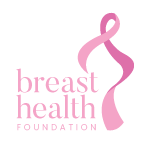Pain in the breast is a frequent complaint. All women will experience breast pain at some stage in their lives but some women are unfortunate enough to suffer from constant or repeated episodes of breast pain. When breast pain becomes so excessive that it begins to interfere with the patient’s lifestyle, for example making it difficult to wear seatbelts or having difficulty with sexual intercourse, it is known as mastalgia.
For most women breast pain is something that is experienced just prior to the menstrual period, or otherwise may be felt as an occasional twinge, but it does not feature heavily in our lives. Importantly, Breast Cancer only presents with pain in less than 10% of cases and will be a constant pain usually associated with a lump. Even if there is no mass but a constant localised pain a mammogram or sonar should be obtained. Only 2% of these cases will be due to cancer.
Trying to treat or cope with breast pain is often very frustrating. Most textbooks describe breast pain as cyclic or non-cyclic depending if it is related to the menstrual cycle. Two thirds of breast pain is cyclical and caused by the changes in hormones in our breasts. The rest is non-cyclical, of which one half is related to the bones and joints beneath the breast. Unfortunately it is difficult for women to differentiate these symptoms. All patients presenting with breast pain should have a thorough history and clinical examination with an ultrasound, and a mammogram if over 40.
It is easiest to approach pain according to the symptoms and type of pain. Sometimes women may have more than one type of pain. Sometimes it is only by treating the pain that its cause can be determined.
